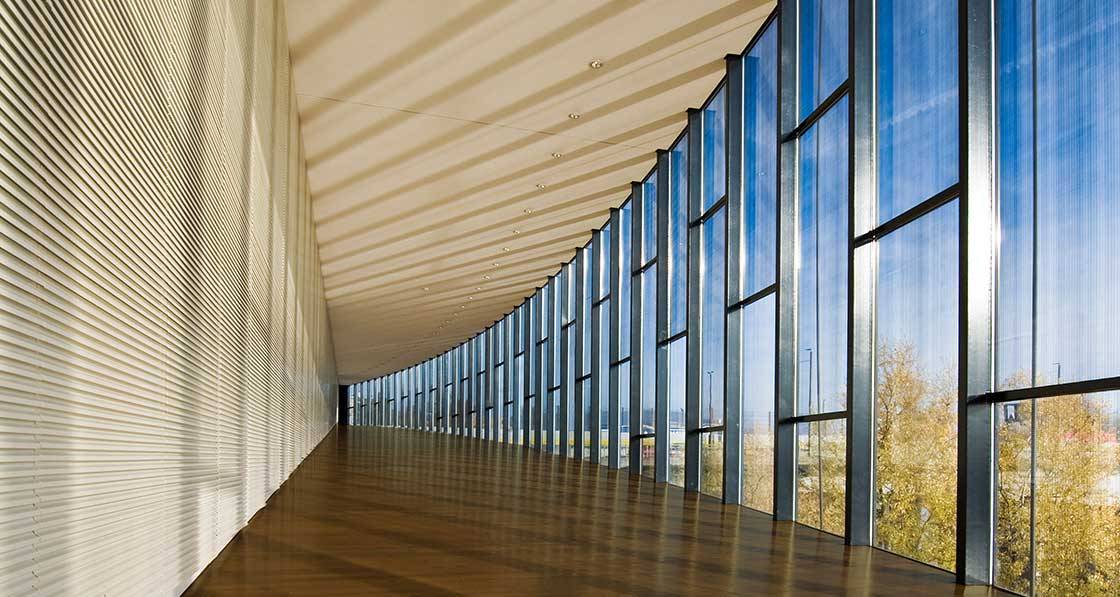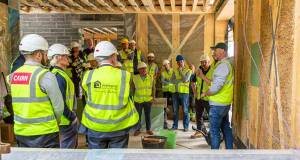
- Marketplace
- Posted
Why shading is a major issue in our hospitals
Daylighting, overheating, glare and lack of natural, insect-free ventilation remain significant issues in UK hospitals and may be hampering the ability of patients to recover, and hospital staff to properly care for them, according to UK solar shading manufacturer Smartlouvre.
This article was originally published in issue 34 of Passive House Plus magazine. Want immediate access to all back issues and exclusive extra content? Click here to subscribe for as little as €10, or click here to receive the next issue free of charge
Smartlouvre managing director Andrew Cooper said that many UK hospitals are prone to overheating and glare, which in turns leads to stuffy indoor environments that are sub-optimal for both patients and staff, as emphasised in the latest CIBSE guidelines on ventilation.
“In a healthcare environment the occupants need natural daylight and air more than ever,” he said. “A connection to the outdoors and having access to natural light helps patients heal faster, making for a shorter hospital stay, and in general, the therapeutic environment that is strived for.”
But without proper shading, glazing that provides views and daylight can also cause overheating and glare, and discomfort for those inside. Cooper says these are often not considered during hospital design. “All too often they are disregarded, or at least deprioritised and found to be a problem after the building is occupied.”
He pointed out that back in 2018, a UK heatwave saw NHS trusts bulk-buying mobile air-conditioning units, fans and bottled water as temperatures climbed to up to 40C inside wards. “This year is predicted to be the warmest year in UK history when we are also dealing with a global coronavirus pandemic, which makes clean natural ventilation essential,” he said.
“So why isn’t solar shading prioritised? Or is it the cost of cooling? Or the effect on the environment of air conditioning? Ventilation is crucial, as CIBSE emphasise, especially whilst dealing with the pandemic, but so is heat and light control. Worse still, healthcare trusts that don’t have imminent budgets for new buildings are seeing their running costs rise, year after year, in order to manage temperatures in buildings built when these levels of temperatures weren’t even a consideration.”
The UK Committee on Climate Change stated in a recent report that the types of hospital ward that are vulnerable to overheating currently make up 90% of the total stock (by floor area). A recent Cambridge University report found that some £17.5bn of upgrades could be needed to make UK hospitals resilient to overheating through new shading measures and improved ventilation.
“Overheating in hospitals is a serious issue. The general design guidance for healthcare premises as defined by the Department of Health isn’t prescriptive when it comes to solar gain and glare. It simply states that it should be controlled and suggests examples of providing control being through louvres and blinds. Internal or external, it doesn’t say. Furthermore, it suggests that thermal comfort conditions are ‘issues to consider’.
Where are the standards? The minimum heat gain and glare, the temperatures acceptable at any given point in the day? Recuperating patients require a lot of sleep, which is interrupted at just 26C, and that’s just the start.
“And so, the management of heat and glare is left to shading solutions that at best, remove only some of the problems, or at worst, also remove the benefits of the glazing and the daylight.”
“Internal blind systems remove visibility and a connection with the outside world and only protect the room from a minimal amount of heat gain. External shading systems do work but are expensive to install and maintain as well as reducing the quantity and quality of daylight and vision out. Even the most recent advances in glazing technology reduce the view out.”
Smartlouvre’s MicroLouvre product consists of a fine bronze allow mesh, comprising 700 tiny ‘bris-soleil’ fins per metre of fabric, measuring only 1.5 mm in depth. It is installed on a frame external to any windows, allowing heat to accumulate on the surface of the metal and then dissipate to the outside before it reaches the window.
“You stop the heat and light before it hits the glass, with a metal fabric, with micro fine louvres woven in to dissipate the sun’s heat and energy but not block natural daylight, natural ventilation or vision out,” Cooper said. “This solution works totally differently from traditional external and internal blinds, which reflect, distort and restrict vision and light.”
“It doesn’t diffuse daylight, it provides all the benefits but not the negative impact of excessive heat gain and glare. The louvres are micro fine, and angled at a level to ensure optimum light in, and visibility out, whilst protecting the building occupants from the heat, glare and even external viewing in. It’s known as angular selective technology. Testing at Fraunhofer Germany has shown that MicroLouvre, retrofitted on to ordinary double glazing, outperforms even the best solar glasses.”
MicroLouvre was recently studied as part of an exercise carried out by Richard Tibenham of Greenlite Energy Assessors to model different solar shading solutions for a large new student accommodation building in the East Midlands.
Tibenham’s model determined that without any solar shading, the building was likely to experience “moderate to severe” overheating issues, even without taking account of future climate change scenarios.
He modelled MicroLouvre against two other solar control solutions, namely control glass and high-performance internal blinds. Of the three products, Tibenham concluded that Smartlouvre offered the “highest level of guarantee against overheating concerns over the medium-long term”.
He concluded that the product offered a good glare reduction while allowing full daylight spectrum transmittance and a durable service life of 25 years plus, all while reducing overheating to the required target (CIBSE TM59).
“MicroLouvre performs better than retrospectively applied solar control films in terms of light transmittance, summertime solar gain reductions and durability,” he wrote. He also stated that in the case of this new build student accommodation, however, it is the more costly option. On a retrofit project however, MicroLouvre would compare more favourably, because its cost would be compared with the need to fully replace existing glazing with a solar control option.
Speaking to Passive House Plus, Smartlouvre’s technical product manager Joe Reynolds welcomed Greenlite’s analysis, and recognition of MicroLouvre’s performance. “Now we just need to quantify the effect of full-spectrum daylight, superior glare control and the other added benefits MicroLouvre provides,” he said.
To find out more about Smartlouvre go to www.smartlouvre.com.
- Issue 34 galleries
- Louvre
- solar shading
- overheating
- brise soleil
- UK Marketplace
- Irish Marketplace
- UK
Related items
-
 King of the castle
King of the castle -
 Energy poverty and electric heating
Energy poverty and electric heating -
 New Ejot profile cuts thermal bridging losses by 25mm insulation equivalent
New Ejot profile cuts thermal bridging losses by 25mm insulation equivalent -
 Build Homes Better updates Isoquick certification to tackle brick support challenge
Build Homes Better updates Isoquick certification to tackle brick support challenge -
 Ecological Building Systems expands UK and Irish straw panel construction with EcoCocon deal
Ecological Building Systems expands UK and Irish straw panel construction with EcoCocon deal -
 Material matters - A palette for a vulnerable planet
Material matters - A palette for a vulnerable planet

